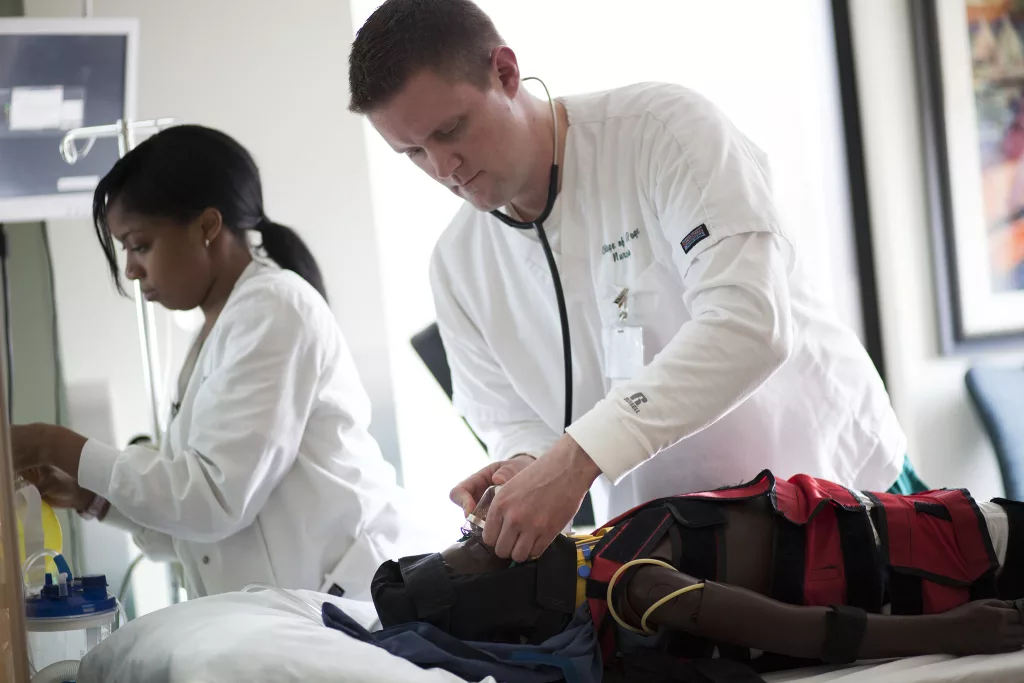From Novice to Lifesaver: Navigating the Essentials of EMT Courses

EMT courses are designed at the college level and demand significant study time and practical training. These classes serve as a foundation for students looking to pursue medical tech certifications and other advanced healthcare.
EMT courses are available at community colleges, private companies, and fire departments. Course duration varies, but they typically run for a few weeks.
-
Getting Started
EMT training is intensive and requires a lot of time. It’s also an important career move, so it needs to be taken seriously from the start. The first step is researching different programs and evaluating your options. The program length, class format (either in-person or online), and clinical requirements are all important factors to consider. Then, once you’ve narrowed down your choices, make sure the program is accredited by a reputable accrediting organization and that the cost is within your budget.
Another important factor is getting advice from current or former EMTs. They can provide valuable tips on studying techniques, how to handle the stress of the profession, and other aspects of the training experience. In addition, talking to them can give you a good idea of what it’s like to work in the emergency medical field.
When selecting an EMT program, consider the length of the program, class schedule, and clinical requirements. You’ll want to choose one that will allow you to complete the program within a reasonable amount of time so that you can begin your career as soon as possible. Also, it’s a good idea to look into financial aid options to help offset the costs of your training.
Once you enroll in an EMT program, expect the classes to be a mix of lecture and skills practice. The lecture portion will typically cover the basic content you need to know for your job, such as anatomy and physiology, and then you’ll get into groups to practice the specific emergency scenarios that might come up on the job. You’ll likely be doing this over and over again, and it’s a great way to get accustomed to real-life medical emergencies and how to respond to them.
Another aspect of the classroom experience is frequent psychomotor skills testing. These are hands-on tests where your instructor will observe you as you perform the specific emergency care tasks he or she wants you to practice. If you don’t pass, you’ll need to repeat the test a few times until your instructor is satisfied that you’ve got the skills down.
-
Studying
EMT courses are designed to provide a comprehensive education on the role and responsibilities of an emergency medical technician. They require intense work involving reading, learning new skills, and in-class lectures. The training is fast-paced and can be demanding, but with the right study tips, you can make it through!
Before starting your EMT program, it’s a good idea to familiarize yourself with some of the basics. There are a ton of websites and YouTube videos that teach basic anatomy, medical terms, and more. Doing so can give you a head start when it comes time to learn more about those topics in your classes and prepare for the NREMT exams.
The majority of your learning will take place in class, and the lectures are usually fast-paced, so it’s a good idea to be prepared. This means getting enough rest before each class and studying beforehand. Knowing how to prioritize your studying and stick to a schedule is also important. Studying a little bit each day will help you get through the program without burning out.
Most importantly, don’t be afraid to ask for help! Your instructors are there to support you and want you to succeed. They are willing to spend extra time practicing practical skills with you or explain the difference between an AMI and an angina. Having an instructor you can trust and confide in will make all the difference in your success during the program.
In addition, if you can find a current or former EMT who completed their program recently, their advice can be valuable. Ask them about their experience with the program, the instructors, classes, and materials. If they had any unexpected challenges, find out what worked and didn’t work for them.
As you embark on your journey through the world of EMS, keep in mind that this is an extremely rewarding career that requires dedication and hard work. Whether it’s saving someone’s life or helping them through a tough situation, you will be making a huge impact on people’s lives every day.
-
Practical Training
Besides studying for the exam, an EMT course will include a lot of practical training. This may be in the form of hands-on skills practice sessions or virtual simulations. It could also include field experience at an emergency medical services agency or in a community setting, such as a hospital or an urgent care clinic. This is a vital aspect of the learning process for EMT students and should be included in every training program, regardless of delivery method.
The EMT course will cover a range of medical emergencies, including cardiac arrest, respiratory and abdominal distress, trauma, and childbirth. It will also cover ambulance operations and patient assessment. The training will be facilitated by a qualified instructor and delivered in either a traditional classroom or online. RWJBarnabas Health offers an EMT class that uses a mix of digital textbooks and online learning for self-guided study, and classroom sessions to practice hands-on skills and take exams.
While there are many factors to consider when choosing an EMT program, the most important factor is the accreditation of the program. This will ensure you receive a quality education that meets national standards. Other things to consider are the program length, class format, and clinical requirements. A good way to determine if a program is right for you is to reach out to current students or alumni.
An EMT program can be physically and emotionally challenging. As a result, it’s crucial to have mental health support and tools. It’s not uncommon for EMTs to experience emotional trauma as they work in the field. Even if 911 calls are not the high-octane, “Night Watch”-esque calls that involve car accidents and crimes, they still can be terrifying for those involved and their loved ones. That’s why it is critical for EMS workers to prioritize their mental health and to talk with peers about their experiences. This will help them better navigate the stress and emotional trauma that is often associated with their work. Also, it’s important for EMTs to get plenty of rest and exercise to maintain physical health.
-
Exams
The EMT exam is the final step before beginning your career as an emergency medical technician. It is a computer-adaptive test, which means the questions on the exam will get progressively harder or easier depending on your performance. The exam is broken up into two parts–a cognitive portion and a psychomotor skills section. The psychomotor skills section includes hands-on practical tasks that you will be expected to perform as an emergency medical technician.
The cognitive portion of the exam is based on national standardized emergency medical procedures and knowledge. The exam is comprised of 70 to 120 multiple-choice questions, and you will be given two hours to complete it. There are ten unscored “pretest” questions on the exam that are used to evaluate future question difficulty.
Practicing with EMT flashcards and practice tests can help you prepare for the exam. Many students find that reading the information a second time and paying close attention to the details is helpful in solidifying what they have read. Making notes in a journal or notebook can also be a helpful study tool. Taking EMT practice exams will give you a feel for the actual exam and help you identify the areas that need more studying.
One of the most important things to remember about taking the exam is that you cannot afford to take it too soon. You only have six chances to pass the EMT exam, and failing the exam more than once can result in additional training requirements or even repeating the entire program.
When you take the exam, it is essential that you follow all of the testing center’s instructions carefully. You may not be allowed to bring anything into the exam room, including a cell phone, and you will likely be patted down and have your arms and legs searched before being allowed into the room. You will be required to sign a non-disclosure agreement before being permitted to take the test, and you will have to wait until the instructor is sure that you are ready before you can begin.







